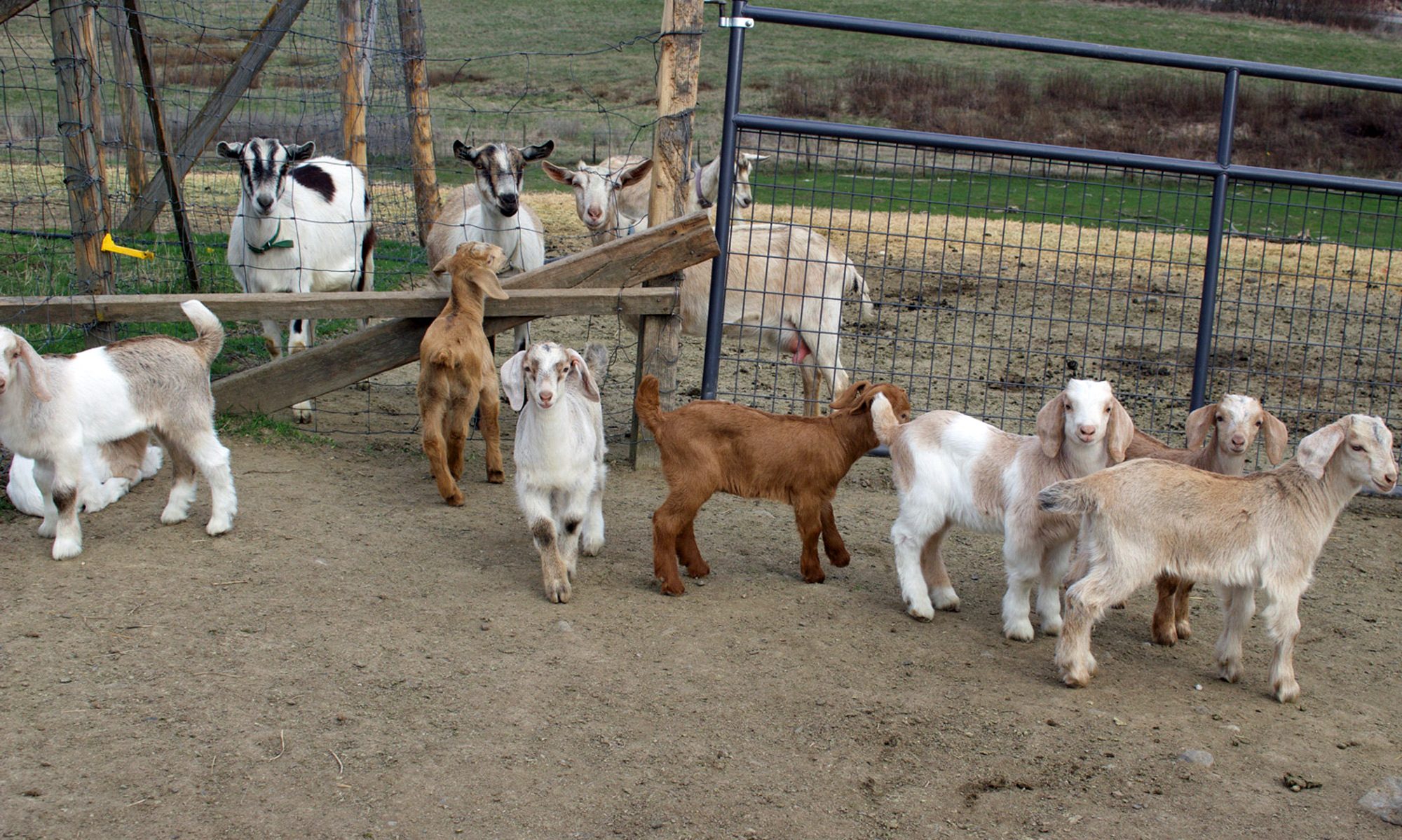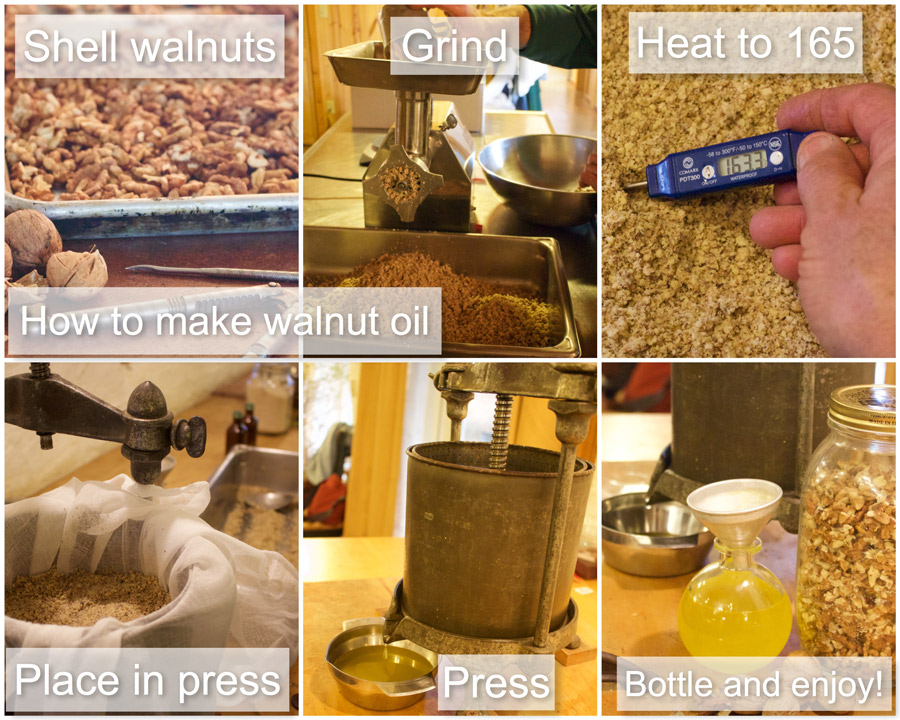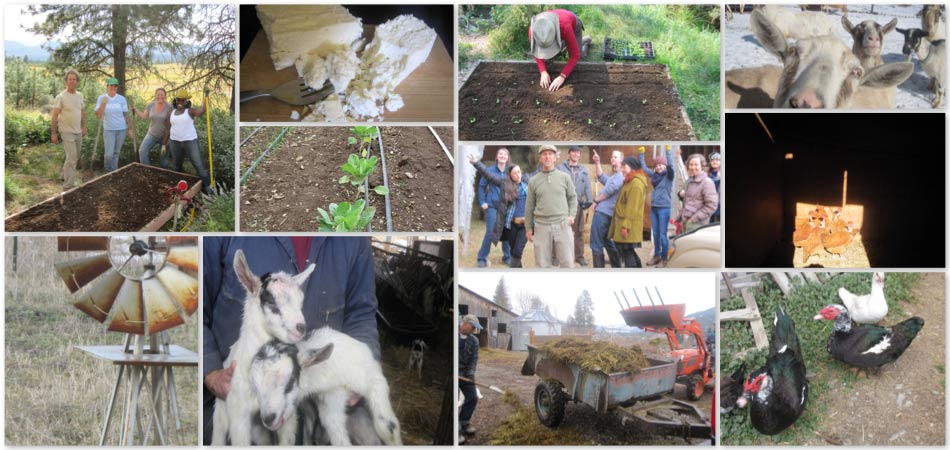After many years of not posting we have a new voice here at Quillisascut. Caroline Recker is spending the summer helping around the farm, putting in hours of garden fun, feeding us delightful pastries and helping nurture the many people who visit the farm. Here is a glimpse in her words of life at Quillisascut Farm.
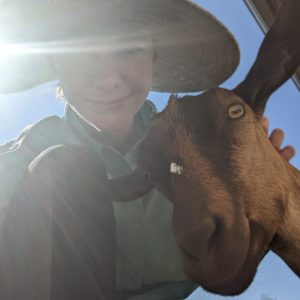
Caroline Recker: summer intern, guest contributor, and goat enthusiast
Quillisascut Day 4—I’ve settled in a bit and I’m getting more comfortable with the kitchen, unspooling like an octopus from a bottle. I’ve been kindly invited to spend the summer at the farm school, weeding, planting, and cooking with hyperlocal, peak season product. We’re gearing up for the first workshop—not Rick and Lora Lea’s, of course, but mine. 6 ladies here to make cheese. They’re only staying for one night, but it’s my job to help feed them between curd cuttings.
I haven’t had time to feel nervous about this, but I know if I think about it too long, I will. So, I go to what I know: I make bread. I choose Jeffrey Hamelman’s Vermont Sour recipe from Bread: A Baker’s Book of Techniques.
I trounce back and forth from the kitchen to the bakery (a little room on the opposite side of the house with cheery yellow walls and a 20-quart Hobart mixer that probably predates me by decades) and gather my mise. My gram scale didn’t make the trip to Rice with me, so I lament the imprecision of my task. No one will know if I round up 1.6 grams of salt to 2, right? A little rye, a lot of bread flour in a bowl, and then I must feed Wilma.
Wilma also predates me by decades. She is a wild yeast cultivar named for Chef Kären’s grandma and has been lovingly nurtured by untold generations of stern Nordic women. Okay, I was once told a precise number of generations, but I’m sorry, Chef, I forgot. Farm workshop attendees get to take a piece of Wilma home if they choose, to feed her for at least a few weeks and then slowly starve her in the back of a too-full fridge where she will eventually suffocate in hooch. (Again, sorry!) I’m worried that she’s too sluggish—I fed her a few days prior, but she’s been taking things slow in the reach-in. Still, I build a levain and hope for the best.
The next day I am rewarded: I can see a milky line where Wilma has risen against the sides of a polycarbonate 6th pan. She’s fallen, too, but that’s okay. She’s ready to leaven. And I’m not taking any shortcuts—there’s no added yeast here. I’ll work the gluten, but Wilma’s gotta bring it to life. I start with an autolyse. Everything’s in the bowl but the salt, mixed until just moistened, and then left to sit and develop a little gluten and begin fermenting. While I wait, I prepare falafel waffles. Exactly what they sound like. As it turns out, there’s a reason we shape falafel in little balls, patties, or even quenelles, but I digress.
30 minutes pass before I return to my bread mix, in need of a win after a heartbreaking failure to grease the waffle iron. Jeffrey (never call him Jeff) tells me to move up to a Hobart speed 2, but I’m making 2 loaves in an 8-quart KitchenAid, so I approximate. And—whoops—almost forgot to add the salt! I tip the contents of a waiting pint container into the mix. In minutes, my dough is ready for its bulk ferment. It’s a little cold outside, but I’m in no hurry. I cover the bowl and head out.
My day outdoors is idyllic: I harvest strawberries in a little bucket, filling an enormous steel bowl with jewel-bright fruits which I’m normally forced to purchase by the overpriced clamshell. As Lora Lea and I stop to deposit our bounty in the walk-in, I peek at my dough on the counter. I think things are moving, but it’s only been an hour, so I’m not worried. I give it a fold, then we join Rick in the garden, passing through the goat pen—idyllic!—before planting some carrots to replace a row that failed to thrive. Rick regales us with stories from the front lines in the gopher wars. It seems they’ve learned to shove dirt in the traps which are buried in the ground. I don’t want to sound like a sympathizer, but I am secretly impressed by their wiles. The most reliable gopher bait is a carrot, which are in scant supply (see aforementioned failure-to-thrive), and even then, a catch is not guaranteed. Lora Lea selects the smallest carrot she can find while I muse about Darwinism and increasingly clever generations of burrowing rodents.
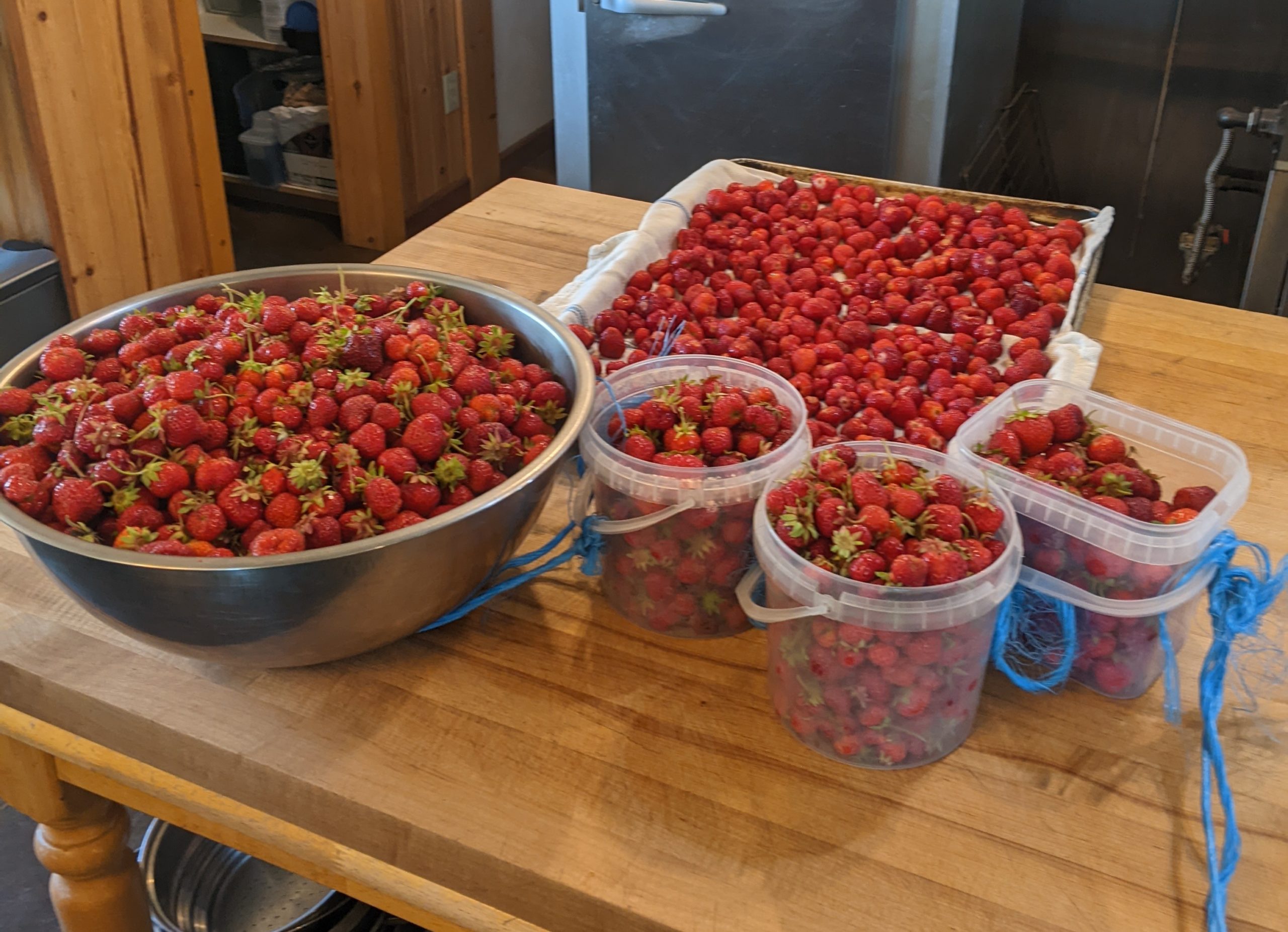
An almost unmanageable strawberry harvest
As we head in for lunch, I’m disappointed to find that my dough hasn’t doubled yet. At Lora Lea’s suggestion, I set the bowl on a trivet above the stove, where the always-on pilot lights keep things cozy. Still, it’s nearly dinnertime before I can divide and shape. I assure my hosts that I can manage so long as the process is over by 9 pm.
I dust my bannetons with a 50/50 mix of rice flour and bread flour. Both will help me avoid sticking in the coming hours of proofing. Or rather, I dust my bannetons with bench flour, deposit the first loaf seam-side up into the waiting vessel, then realize my mistake. I’ve lost a lot of volume to sticky loaves in the past, and I want to do this right, damn it, so I hastily turn out the dough and fix things. I’ve lost the lovely, ridged pattern from the basket, but the loss is small in comparison to the deflation that could have been. I pop one loaf in the fridge to retard overnight, and the other goes back in its warm spot above the stove for the final proof.
It’s nearly 8 pm, 12 hours since the mix began, before we’re ready. I’m eager. Too eager. I slam the loaf out of the banneton and—hell—realize I don’t know where the lame lives. If you’re thinking I should have gotten the lame first, you’re right, and you should have been there to tell me. I grab a chef’s knife. What should be a fluid slash is handling more like a hacksaw. The whole thing is aesthetic butchery, but the dough is spreading and I’m losing time. Only after my little mutilated loaf is in the oven can I reflect on my failures.
It’s not the right shape. The scoring is scraggy. I should have thought ahead. As a recent pastry school graduate, I ought to be past these rookie mistakes. I’m frustrated. But there is hope: my remaining loaf sleeps in the walk-in. Wilma will be at work all night, munching on sugars and making lots of alcohol and carbon dioxide.
When it comes time to fetch my disgrace from the oven, I comfort myself with thoughts of redemption in the morning. There’s some good to be found: the crust has a nice color, dark like the inside of a walnut shell, and blistered like my skin after an hour in the sun. And the whole kitchen smells of yeast and toasted sugar. Not so bad. Loaf #2 is going to make those cheese women wish they’d signed up for a bread workshop. Those mozzarella mamas won’t know what hit them. I’ll be awash in praise from the feta femmes. These thoughts buoy me up the stairs to bed.
The next morning, I make breakfast and slice into the loaf. It’s not so bad—good crumb structure inside. I nibble on the crusty piece at the end (you know, the bread butt) and it’s hard to say how it tastes because I’m just eating crust. But it’s got some tang and some chew. I toast a few slices and scramble a lot of eggs—the ninety-second dozen produced by the chickens this year—and we all sit down to eat. I pile my toast with eggs and begin my analysis, a now-permanent habit developed in culinary school. The bread is… okay. Wilma brought the acidity and it’s pleasantly crunchy post-toaster. Shouldn’t it be better, though?
Lora Lea asks if there’s anything I would do differently next time. Her tone is masterfully neutral. I cite the scoring as my main regret, but I’m still puzzling over this bread. It’s so bland. I leave my seat, which is probably rude, to go examine the recipe again. A few calculations and… oh. Oh no.

1.6 grams vs. 16 grams of kosher salt
I have committed the worst of culinary sins. I have shamed both my chef-instructors and the dozen plus math teachers who tried so hard to do right by me. I didn’t need 1.6 grams of salt. I needed 16 grams of salt. Three years of culinary education and I’m still misplacing decimals. I’ll have to go into hiding.
My hosts are kind, but I’m mortified. Loaf-the-second waits in the walk-in, and I have no choice but to double down on the mistake and bake it. How can I serve unsalted bread? How can I have under-salted it to begin with? What will the cottage cheese chicas say?
I wish I could say I recover right away. But I’m not a friend to myself for a few hours. Not even a successful second loaf can cheer me up. I chew the problem like a leathery crust: how to hide my mistake? I can make bread pudding. I can fry it in olive oil and saturate it with salt. I can cube it up and make some over-salinated croutons. I can brine it in the tears I’m saving for my next moment alone and make a poorly seasoned pap. I can do anything except serve it like bread.
It’s now the eve of the paneer princesses’ arrival. We’ve flipped the chairs over the long dining table in the kitchen. I have a backpack-style vacuum slung over my shoulders like a generic brand ghostbuster. The sun casts long shadows on the wall and I scoot a hose over the floor. One and a half loaves rest on the kitchen island, hiding a secret, but for now I must consider the hose, the long yellow cord trailing behind me, the debris shooting up a tube whose terminus is uncomfortably near to my head. The work is… working, like a dough hook stretching strands. There’s no great epiphany, only a relaxing, and a leavening. My subconscious needed a full 12 hours to rise, but it fills me like a breath now: It’ll all be fine. It’s just lunch.
It’s not a new lesson, but it’s an important one: I, too, am a bread. I, too, am growing at my own unhurried pace. I, too, will die when my insides reach 140 degrees. And maybe after my untimely roasting, I, too, will be devoured by Lovecraftian nightmare creatures whose physiology is so unlike my own as to be unfathomable. Maybe I’ll be salty enough for them.
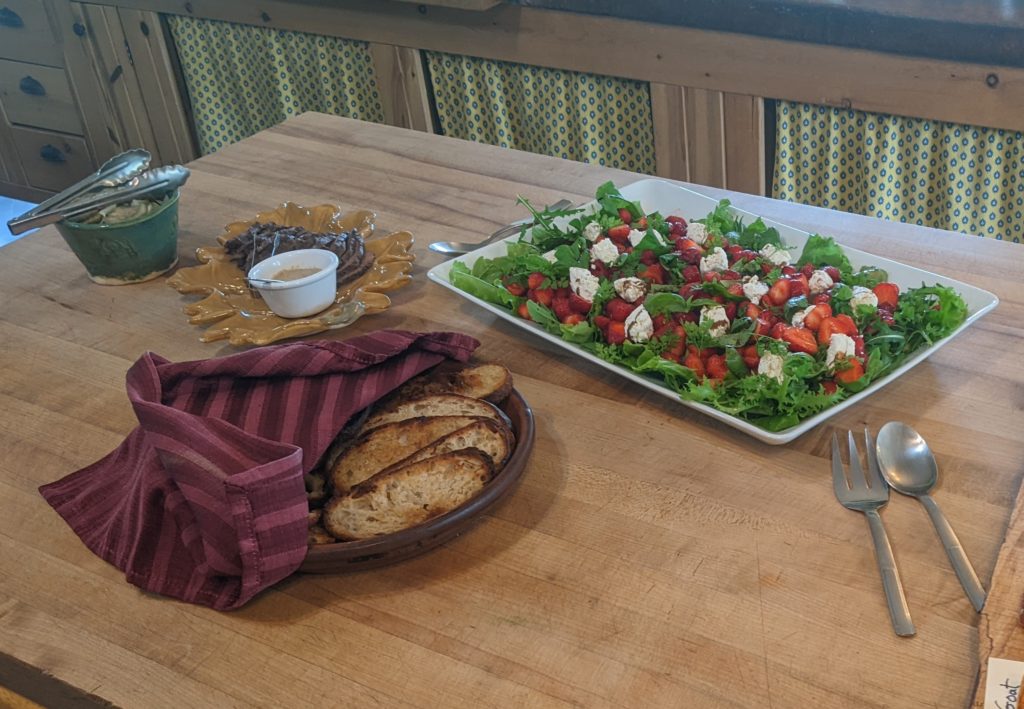
The offending bread, pictured here with an unsuspecting strawberry chevre salad
